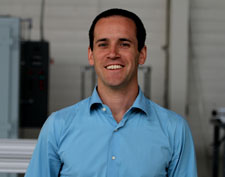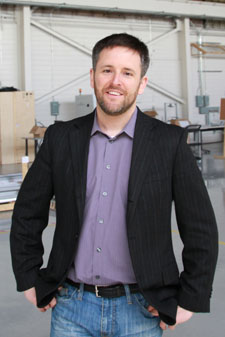Morgan Solar Inc. was founded in 2007 by brothers John Paul and Nicolas Morgan, with angel investment from their father, an experienced CEO in the field of global management consulting and information technology. In 2006, John Paul began to prototype Morgan Solar's Light-Guide Solar Optic - a novel way of capturing, directing, and concentrating sunlight. Soon after, Nicolas left his position as Business Development Manager at Fon Technologies, a Web 2.0 start-up in Spain, to join the company full-time. The Light-Guide is the fundamental technology behind Morgan Solar's Sun Simba concentrating solar panel, which is set for commercial launch in late 2011.
Commercializing A New Solar Technology
John Paul and Nicolas Morgan | Co-Founders of Morgan Solar Inc.
Questions to John Paul Morgan, Founder and CTO, Morgan Solar Inc. and Nicolas Morgan, VP, Business Development, Morgan Solar Inc.
 Why did you decide to make a new solar panel?
Why did you decide to make a new solar panel?
Tell us about the technology.
John Paul:
The fundamental technology behind the Sun Simba is our patent-pending Light-guide Solar Optic (LSO). The LSO is an entirely new way to capture and concentrate sunlight; it is a non-imaging optic, which collects all direct incident sunlight, then bends and conducts that light to a very small, high-efficiency PV cell. The concentration factor achieved is about 1000 times the amount of sunlight that would normally strike a single area – that means more sunlight available to convert to electricity, using about 1/500 the PV material of a conventional Silicon panel.
.jpg)
What makes the Sun Simba different from other solar panels on the market?
 Nicolas:
Nicolas:Nicolas:
From where you are now, there are a number of steps before you’ve reached full commercialization. What are the major hurdles to commercializing a new solar technology?
Nicolas:
In a word, bankability.
Where do you plan to manufacture the panels and why?
Nicolas:
Once you have products ready to ship how do you intend to market and distribute them? Is yours an international market?
Nicolas:
What can we expect to see in the next three years from Morgan Solar?
John Paul:
We will deploy several dozen Megawatts of Sun Simbas over the next three years, as we work towards reaching – speaking in the fairly long term – a Gigawatt of sales – a huge metric that fairly few solar companies have been able to hit. Just as important as the volume of sales is the price of energy that we can deliver – will it be cheaper than conventional fossil fuel-based electricity generation, and affordable in places like Africa? We have a mountain of work in front of us, but I think we also have the strongest team – of optical scientists, electrical engineers – we’ve now even put together an in-house software group – to execute on such an ambitious strategy. In the next three years, we hope that you’ll see Sun Simbas deployed at a scale that will contribute significantly to changing the way the world generates electricity.
The content & opinions in this article are the author’s and do not necessarily represent the views of AltEnergyMag
Comments (0)
This post does not have any comments. Be the first to leave a comment below.
Featured Product

